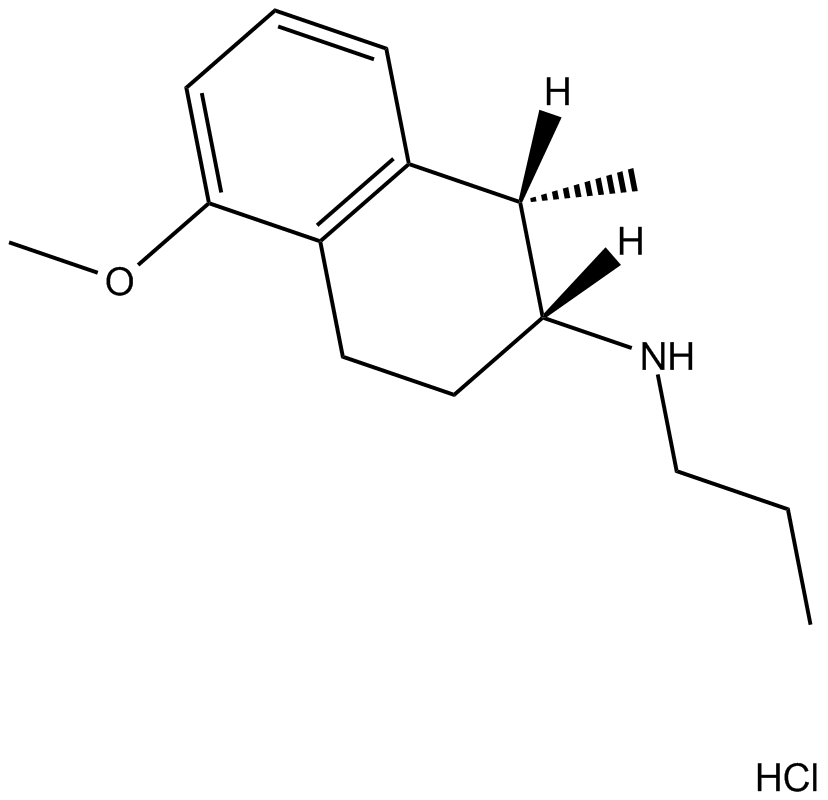Neuroscience
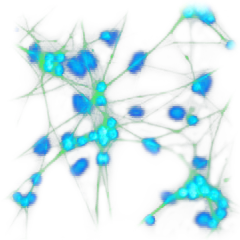
Neuroscience
Neurons communicate with each other, effector organs and sensory organs through the neurotransmitter – receptor pathway at synapses. Neurotransmitters can be divided into 4 major groups: 1. Amino acids (glumate, aspartate, serine, glycine and GABA); 2. Monoamines (norepinephrine, epinephrine, dopamine, histamine, and serotonin); 3. Peptides (opioid peptides, substance P, somatostatin); and 4. Others (acetylcholine, NO, nucleosides).
Ziele für Neuroscience
- 5-HT Receptor(510)
- AChR(57)
- AChE(103)
- Alzheimer(88)
- Amyloid β(130)
- BACE(5)
- CGRP (29)
- COX(286)
- DAPK(5)
- Dopamine Receptor(295)
- GABA Receptor(225)
- Gap Junction(15)
- GluR(121)
- Histamine(2)
- Histamine Receptor(229)
- mPEGS-1(4)
- Muscarinic Receptor(42)
- Neuroscience Peptides(47)
- Nicotinic Receptor(65)
- P2 Receptor(2)
- P2X7 receptor(3)
- SSRIs(7)
- Substance P/NK1 Receptor(20)
- NMDA(2)
- Cholecystokinin Receptor(22)
- GPR139(3)
- mAChR(132)
- MCHR1 (GPR24)(15)
- Neurokinin Receptor(58)
- iGluR(130)
- nAChR(60)
- Beta-secretase(24)
- CaMK(28)
- Dopamine Transporter(17)
- Monoamine Oxidase(78)
- Serotonin Transporter(54)
- Behavioral Neuroscience(274)
- DREADD(0)
- Huntington(10)
- Neuroendocrinology(39)
- Neuroprotection(81)
- Ophthalmology(116)
- Pain Research(166)
- Parkinson(49)
- Seizure Disorders(74)
- Prion(6)
- Cholinesterases(13)
Produkte für Neuroscience
- Bestell-Nr. Artikelname Informationen
-
GC63267
α-Chaconine
α-Chaconin hemmt die Expression von COX-2, IL-1β, IL-6 und TNF-α auf Transkriptionsebene.
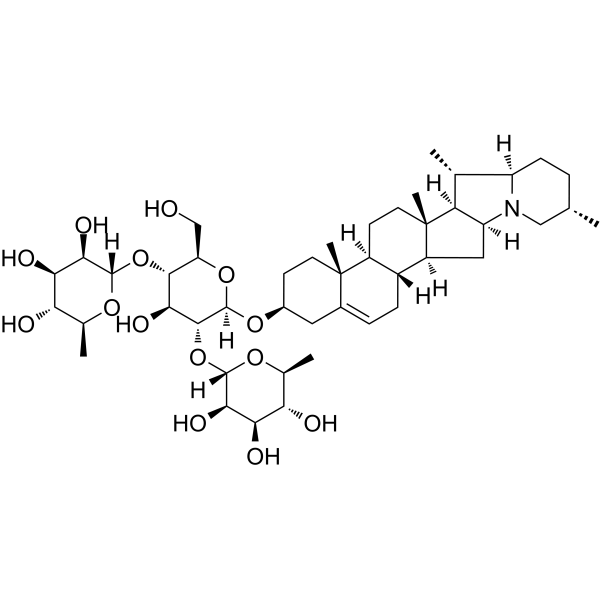
-
GC49097
α-Conotoxin AuIB (trifluoroacetate salt)
GCCSYPPCFATNPDC
A conotoxin and an antagonist of α3β4 subunit-containing nAChRs
-
GC26093
α-Conotoxin GI
α-Conotoxin GI, a 13-residue peptide originally isolated from the venom of the fish-hunting cone snail Conus geographus, acts as a competitive antagonist for the muscle-type nicotinic acetylcholine receptor (nAChR) with excellent selectivity for α/δ receptor subunit binding over α/γ.
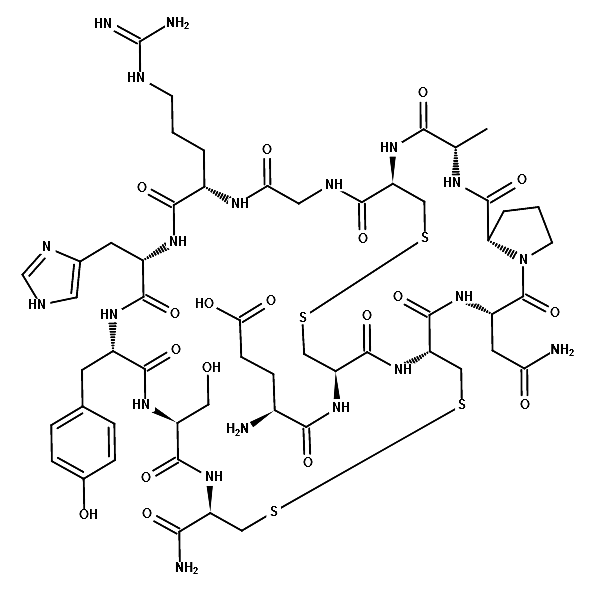
-
GC49140
α-Conotoxin ImI (trifluoroacetate salt)
α-CTx ImI, GCCSDPRCAWRC
A conotoxin and an antagonist of α7 nAChRs
-
GC49838
α-Cortolone
20α-Cortolone, NSC 59872
A metabolite of cortisol
-
GC40262
α-Humulene
αCaryophyllene, (±)-αHumulene
α-Humulen ist ein Hauptbestandteil von Tanacetum vulgare L.
-
GC64563
α-Methylserotonin

-
GC48292
α-MSH (human, mouse, rat, porcine, bovine, ovine) (trifluoroacetate salt)
α-Melanocyte-stimulating Hormone, Ac-SYSMEHFRWGKPV-NH2
α-MSH (α-Melanozyten-stimulierendes Hormon) TFA, ein endogenes Neuropeptid, ist ein endogener Melanocortinrezeptor 4 (MC4R)-Agonist mit entzÜndungshemmenden und antipyretischen AktivitÄten.
-
GC41499
α-Phellandrene
p-Mentha-1,5-diene, (±)-α-Phellandrene
α-Phellandrene is a cyclic monoterpene that has been found in various plants, including Cannabis, and has diverse biological activities.
-
GC10873
α-Spinasterol
Bessisterol, Hitodesterol
α-Spinasterol, isoliert aus Spinacia oleracea, hat eine antibakterielle Aktivität.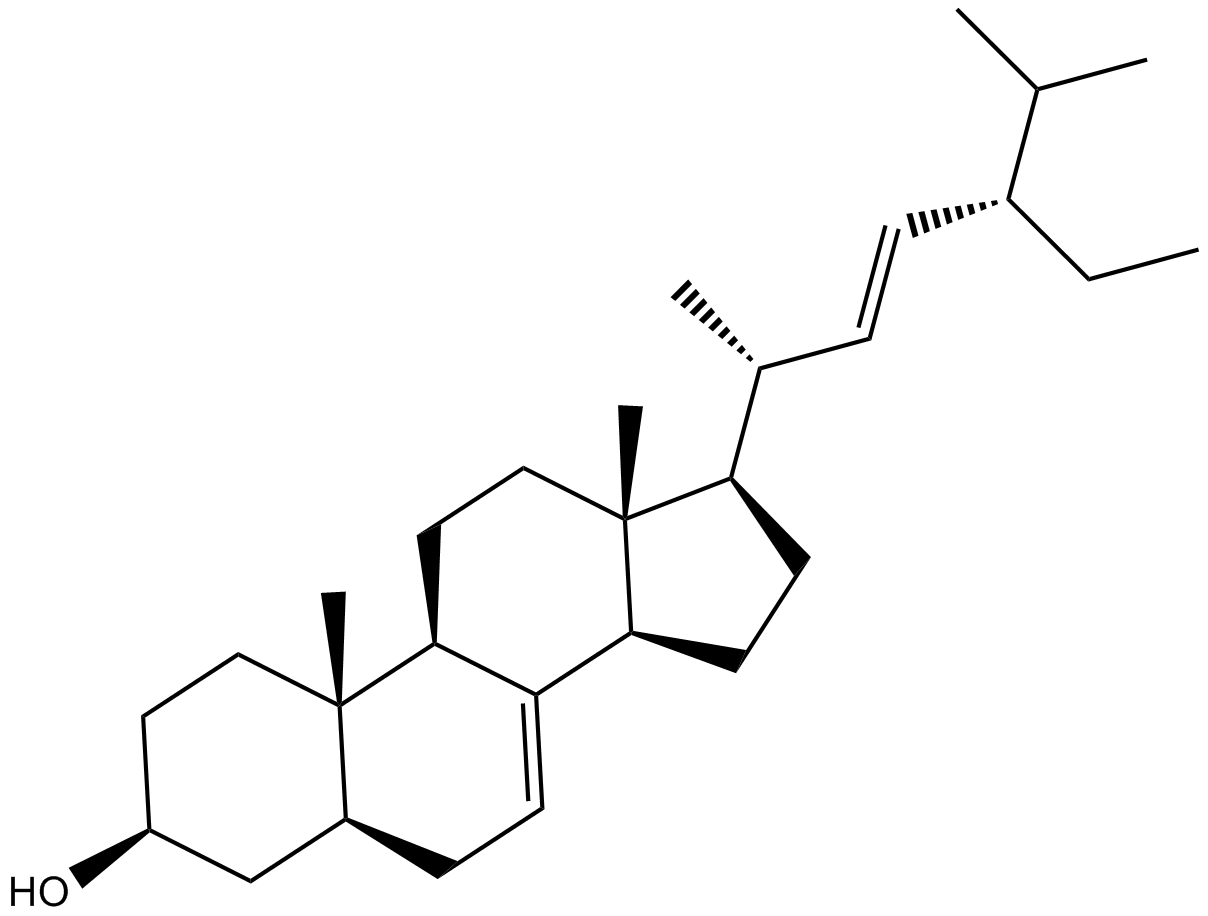
-
GC63615
α-Thujone
α-Thujon ist ein aus Ätherischem Thuja occidentalis-Öl isoliertes Monoterpen mit starken AntitumoraktivitÄten.
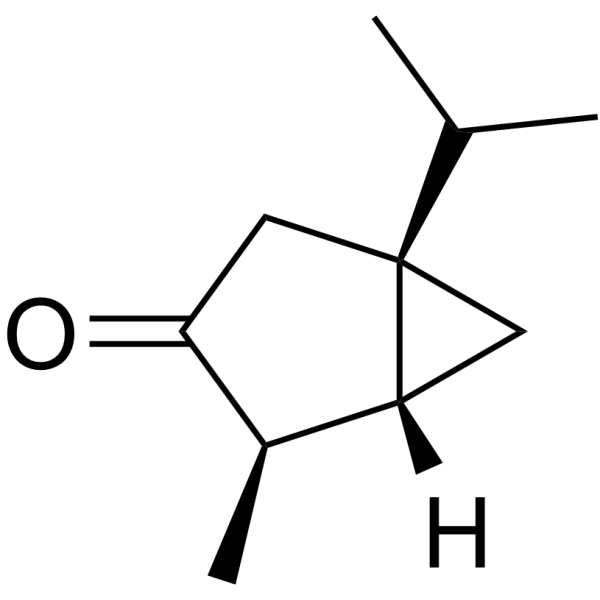
-
GC70179
α7 Nicotinic receptor agonist-1
α7 Nikotinrezeptor-Agonist-1 (Präparation 5) ist ein Agonist des α7 nAChR. Der α7 Nikotinrezeptor-Agonist-1 kann für die Erforschung von psychischen Störungen wie Schizophrenie, Manie oder manisch-depressiver Erkrankung und Angstzuständen sowie geistigen Beeinträchtigungen wie Alzheimer-Krankheit, Lernschwierigkeiten, kognitiven Defiziten, Aufmerksamkeitsdefiziten, Gedächtnisverlust, Lewy-Körper-Demenz und Aufmerksamkeitsdefizit-Hyperaktivitätsstörung verwendet werden.
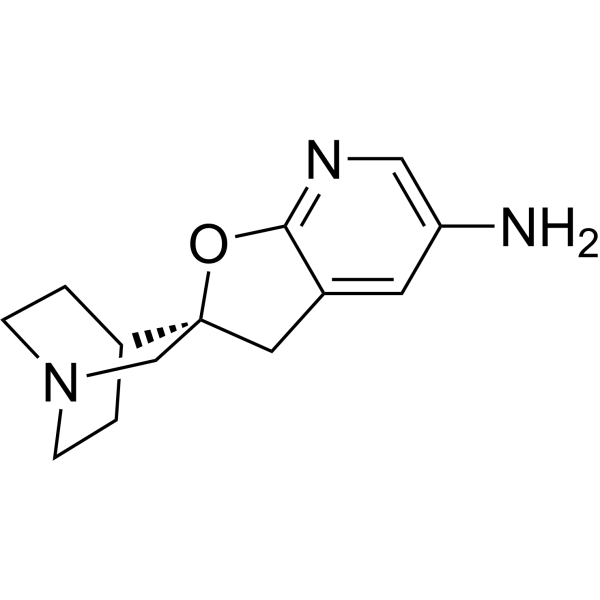
-
GC49467
β-Aescin
A triterpenoid saponin with diverse biological activities

-
GC63273
β-Amyloid (1-14),mouse,rat
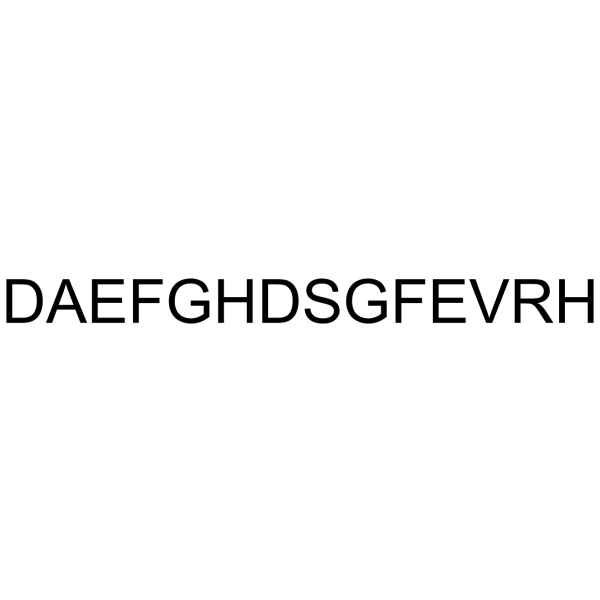
-
GC66089
β-Amyloid (1-40) (TFA)
Amyloid Beta-Peptide (1-40) (human) TFA; Amyloid β-Peptide (1-40) (human) TFA
β-Amyloid (1-40) TFA ist ein primÄres Protein in Plaques, die im Gehirn von Patienten mit Alzheimer-Krankheit gefunden werden.
-
GC70182
β-Amyloid (1-40), FAM-labeled TFA
β-Amyloid (1-40), FAM-markiert TFA ist ein mit FAM markiertes fluoreszierendes Peptid von β-Amyloid (1-40) (Λex= 492 nm und Λem= 518 nm).

-
GC63274
β-Amyloid (1-42), (rat/mouse) (TFA)
Amyloid β-peptide (1-42) (rat/mouse) TFA
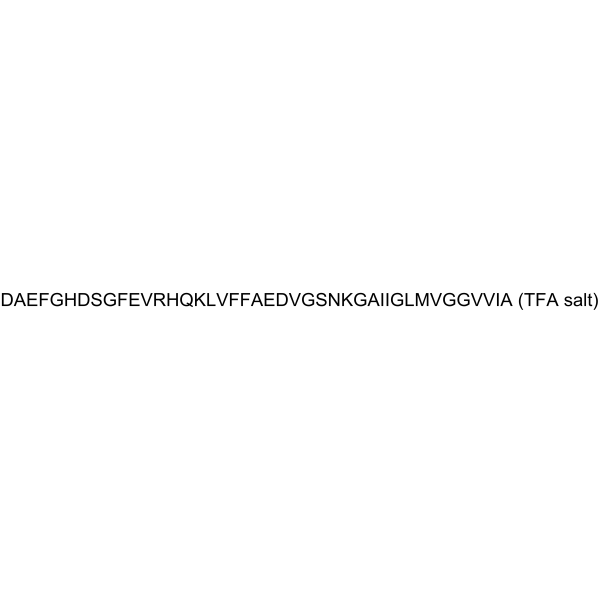
-
GC37984
β-Amyloid (1-42), rat
Amyloid β-peptide (1-42) (rat/mouse)
β-Amyloid (1-42), Ratte, ist ein Peptid mit 42 AminosÄuren, zeigt eine zytotoxische Wirkung auf akute Hippocampus-Schnitte und wird in der Erforschung der Alzheimer-Krankheit verwendet.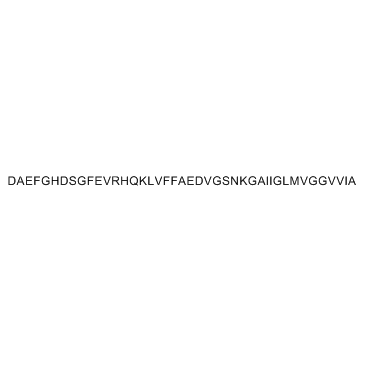
-
GC66416
β-Amyloid (22-35) (TFA)
Amyloid β-Protein (22-35) (TFA)
β-Amyloid 22-35 (Amyloid β-Protein 22-35) TFA, das Fragment der Reste 22-35 von β-Amyloid-Protein, hat eine zytotoxische Wirkung auf kultivierte Neuronen aus dem Hippocampus der Ratte in serumfreiem Medium. β-Amyloid 22-35 TFA bildet Aggregate und typische Amyloidfibrillen, die denen des &7#946;-Amyloidproteins in neutraler PufferlÖsung Ähneln).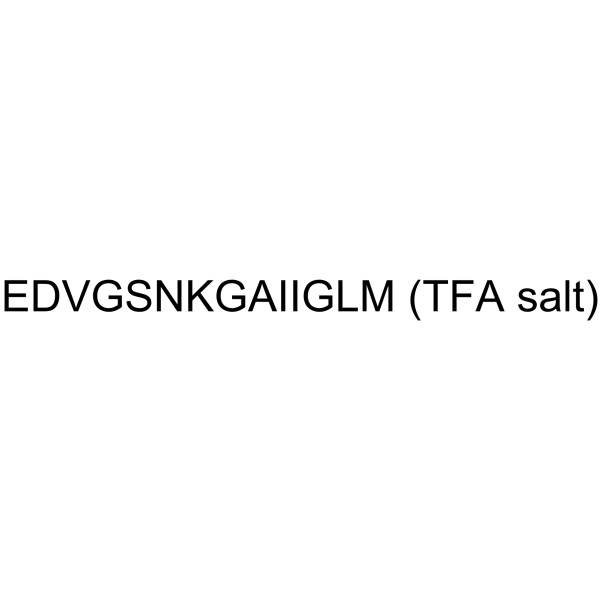
-
GC66346
β-Amyloid (42-1), human TFA
Amyloid β Peptide (42-1)(human) TFA
β-Amyloid (42-1), menschliches TFA ist die inaktive Form von Amyloid β Peptid (1-42). β-Amyloid (42-1), menschliches TFA, ist ein 42 AminosÄuren langes Peptid, das eine SchlÜsselrolle in der Pathogenese der Alzheimer-Krankheit spielt.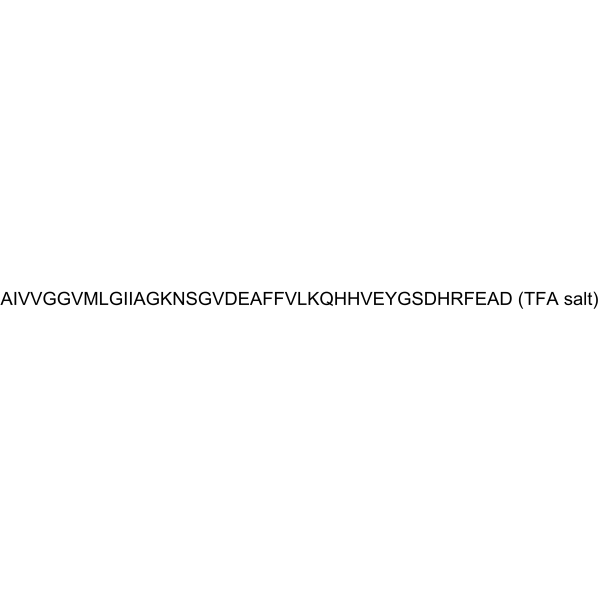
-
GC37986
β-Amyloid 1-17
β-Amyloid 1-17 ist ein Peptid von β-Amyloid, stabilisiert die Fasern und spielt eine Rolle bei der Aβ-Faserbildung.
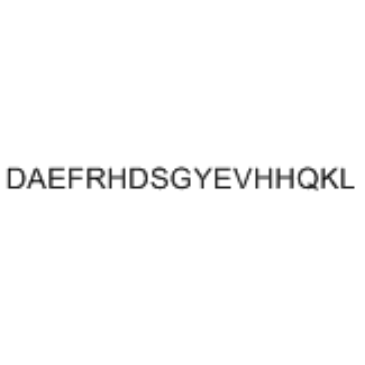
-
GC37987
β-Amyloid 1-20
β-Amyloid 1-20 besteht aus den Aminosäuren 1 bis 20 des Beta-Amyloid-Proteins.
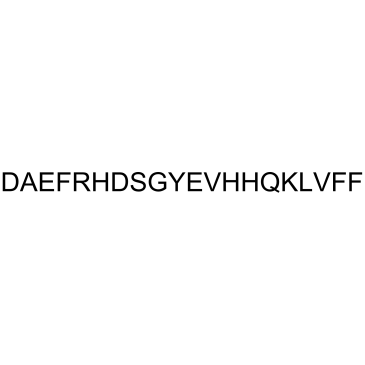
-
GC37993
β-Amyloid 1-9
β-Amyloid 1-9, ein N-terminales Fragment von Beta-Amyloid, besteht aus den Aminosäureresten 1 bis 9.
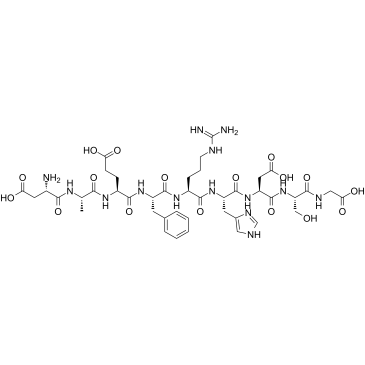
-
GC37985
β-Amyloid 11-22
β-Amyloid 11-22 ist ein Peptidfragment von β-Amyloid.
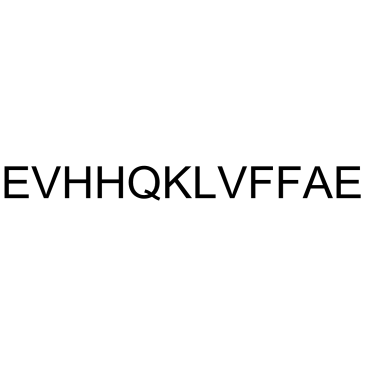
-
GC37988
β-Amyloid 12-20
β-Amyloid 12-20 ist ein Peptidfragment von β-Amyloid.
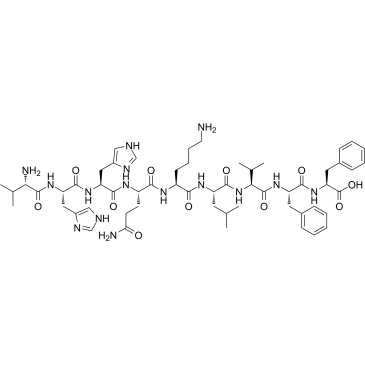
-
GC37991
β-Amyloid 15-21
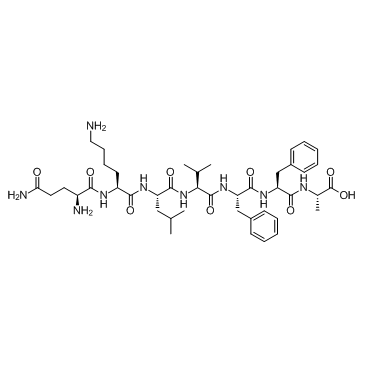
-
GC37992
β-Amyloid 18-28
β-Amyloid 18-28 ist ein Peptidfragment von β-Amyloid.
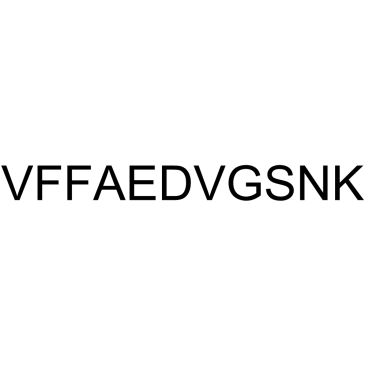
-
GC37994
β-Amyloid 22-40
β-Amyloid 22-40 ist ein Peptidfragment von β-Amyloid.
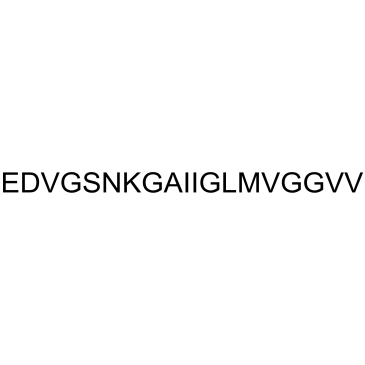
-
GC37995
β-Amyloid 33-40
β-Amyloid 33-40 ist ein Peptid, das aus den Aminosäuren 33 bis 40 des Beta-Amyloid-Proteins besteht.
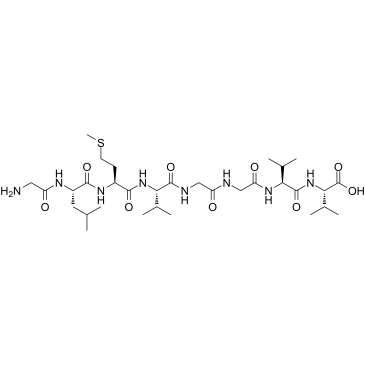
-
GC37996
β-Amyloid 35-42
β-Amyloid 35-42 ist ein Peptid, das aus den Aminosäuren 35 bis 42 des Beta-Amyloid-Proteins besteht.
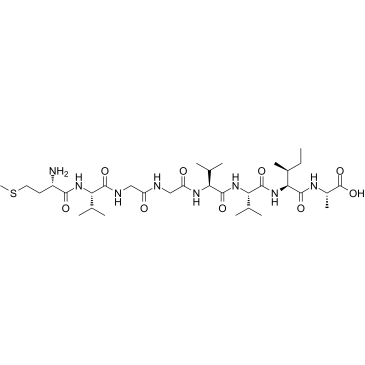
-
GC37997
β-Amyloid 4-10
β-Amyloid 4-10 ist ein Epitop für den polyklonalen Anti-Aβ(1-42)-Antikörper, reduziert die Amyloidablagerung in einem transgenen Mausmodell der Alzheimer-Krankheit.
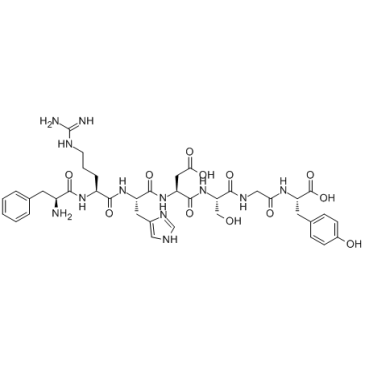
-
GC34944
β-CGRP, human TFA
Human β-CGRP TFA; CGRP-II (Human) (TFA)

-
GC41623
β-Elemonic Acid
Elemadienonic Acid, 3-Oxotirucallenoic Acid, 3-oxo Tirucallic Acid
β-Elemonic Acid ist ein aus Boswellia papyrifera isoliertes Triterpen.
-
GC45234
β-Endorphin (1-27) (human) (trifluoroacetate salt)
β-Endorphin (1-27) is an endogenous peptide that binds to μ-, δ-, and κ-opioid receptors (Kis = 5.31, 6.17, and 39.82 nM, respectively, in COS-1 cells expressing rat receptors).

-
GC45236
β-Endorphin (rat)
β-Endorphin (β-EP) is an endogenous opioid neuropeptide with diverse biological activities.

-
GC52494
β-Endorphin (rat) (trifluoroacetate salt)
An opioid neuropeptide

-
GC49769
β-Glucogallin
1-O-Galloyl-β-D-glucose
A plant metabolite and an aldose reductase 2 inhibitor
-
GC40105
βARK1 Inhibitor
βARK1-Inhibitor (Methyl-5-[2-(5-nitro-2-furyl)vinyl]-2-furoat) ist ein GRK2 (β-ARK1)-Inhibitor.

-
GC38010
γ-Aminobutyric acid
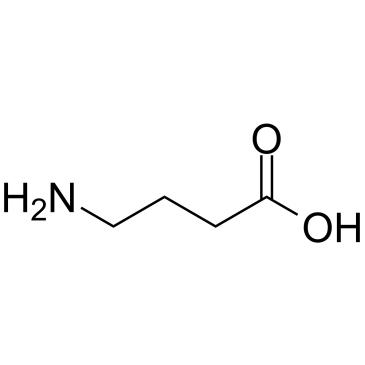
-
GC64508
γ-Aminobutyric acid-d6
γ-Aminobuttersäure-d6 (4-Aminobuttersäure-d6) ist die deuterierte Form von γ-Aminobuttersäure.

-
GC49865
γ-D-Glutamylglycine (trifluoroacetate salt)
γ-DGG
An excitatory amino acid antagonist
-
GC48313
γ-Lindane
An insecticide and GABAA receptor antagonist

-
GC10872
α-Conotoxin AuIB
α-Conotoxin AuIB, a potent and selective α3β4 nicotinic acetylcholine receptor (nAChR) antagonist, blocks α3β4 nAChRs expressed in Xenopus oocytes with an IC50 of 0.75 μM.
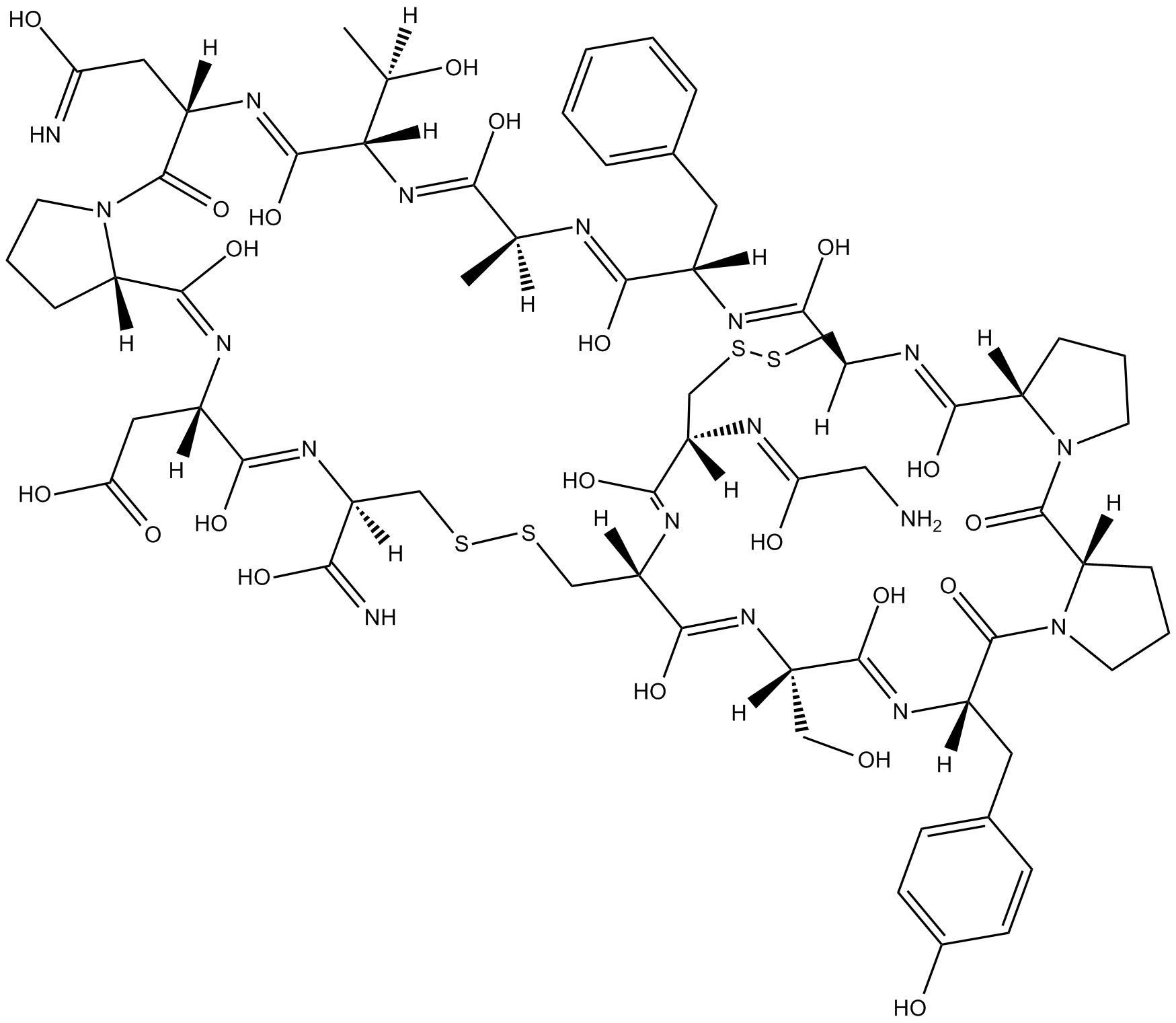
-
GC13644
α-Conotoxin EI
Selective antagonist of neuromuscular nicotinic receptors α1β1γδ
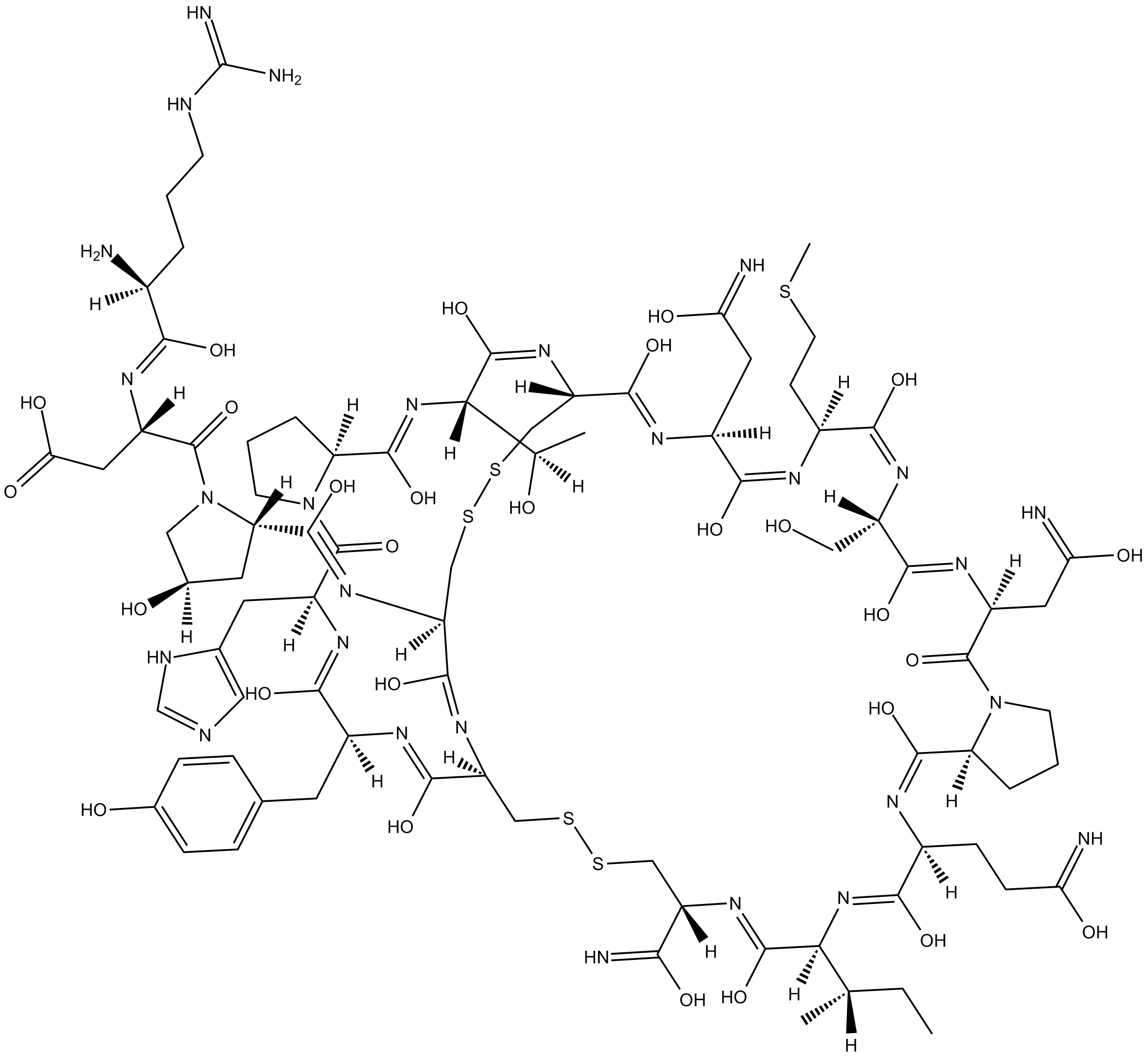
-
GC14353
α-Conotoxin ImI
Nicotinic receptor antagonist
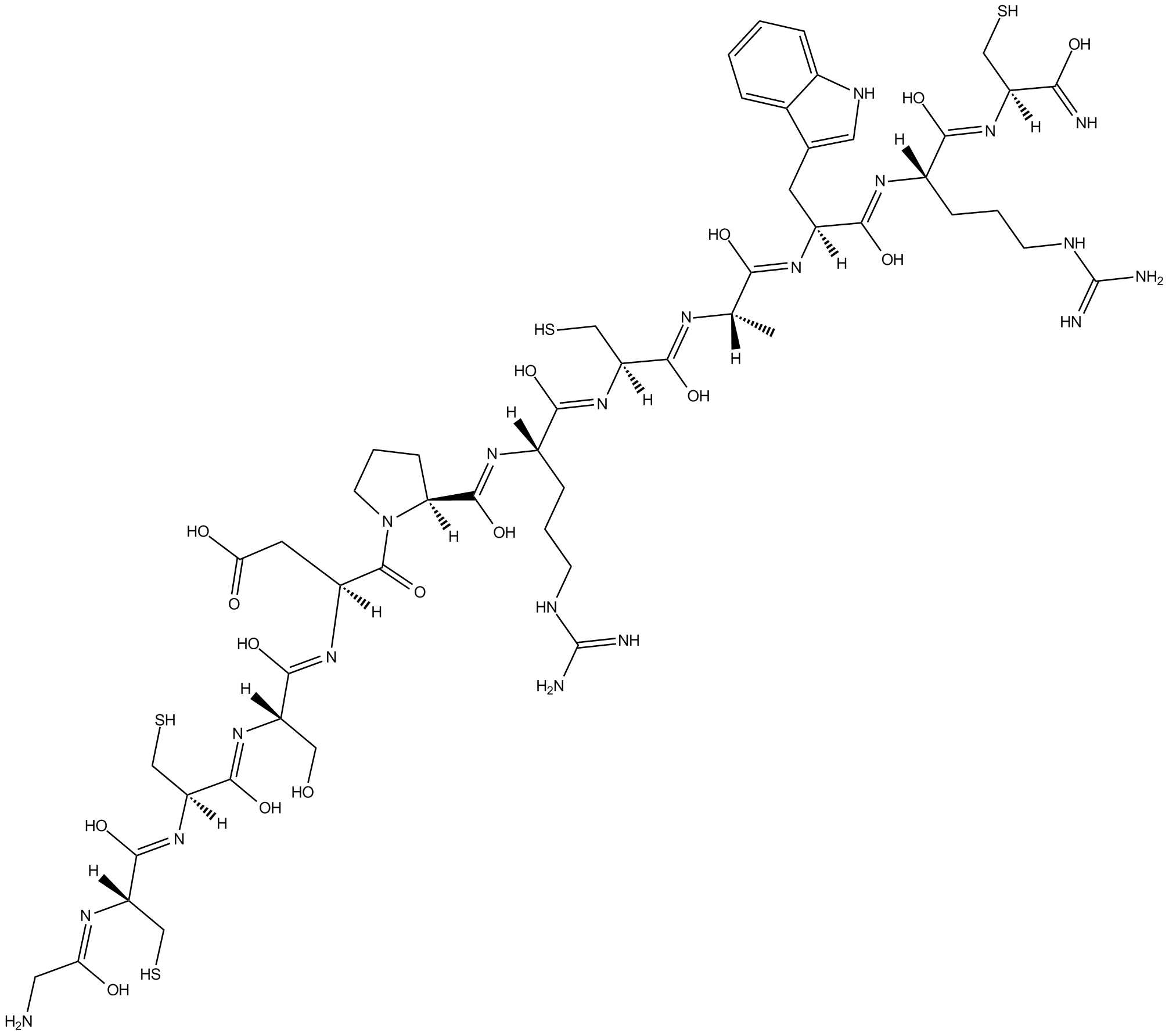
-
GC14296
α-Conotoxin PIA
α-Conotoxin PIA ist ein Antagonist des nikotinergen Acetylcholinrezeptors (nAChR), der auf nAChR-Subtypen abzielt, die α6 und α3 Untereinheiten enthalten.
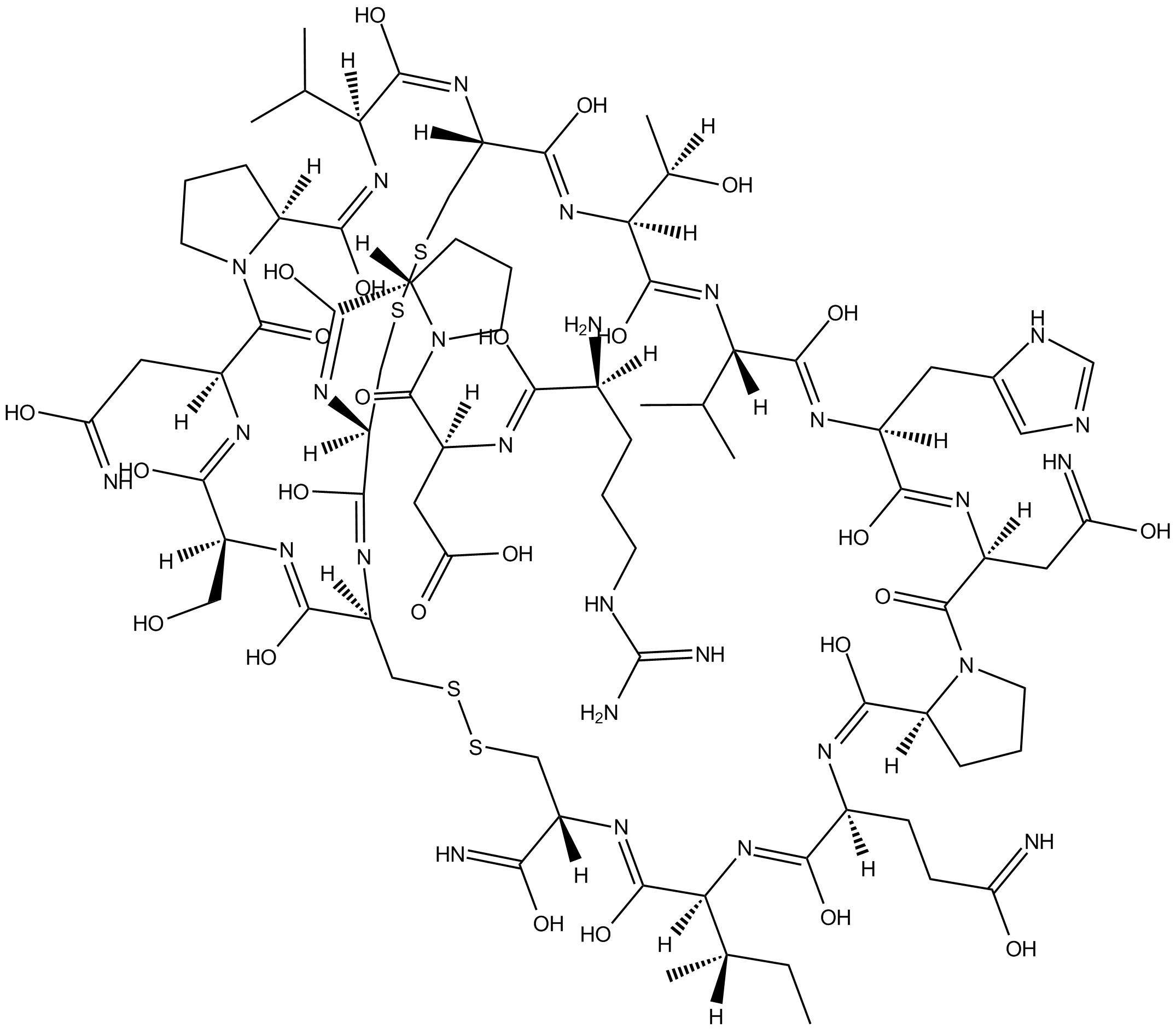
-
GC10368
α-Conotoxin PnIA
α-Conotoxin PnIA, ein potenter und selektiver Antagonist des SÄugetiers α7 nAChR, hat das Potenzial fÜr die Erforschung neurologischer Erkrankungen wie neuropathischer Schmerzen und der Alzheimer-Krankheit.
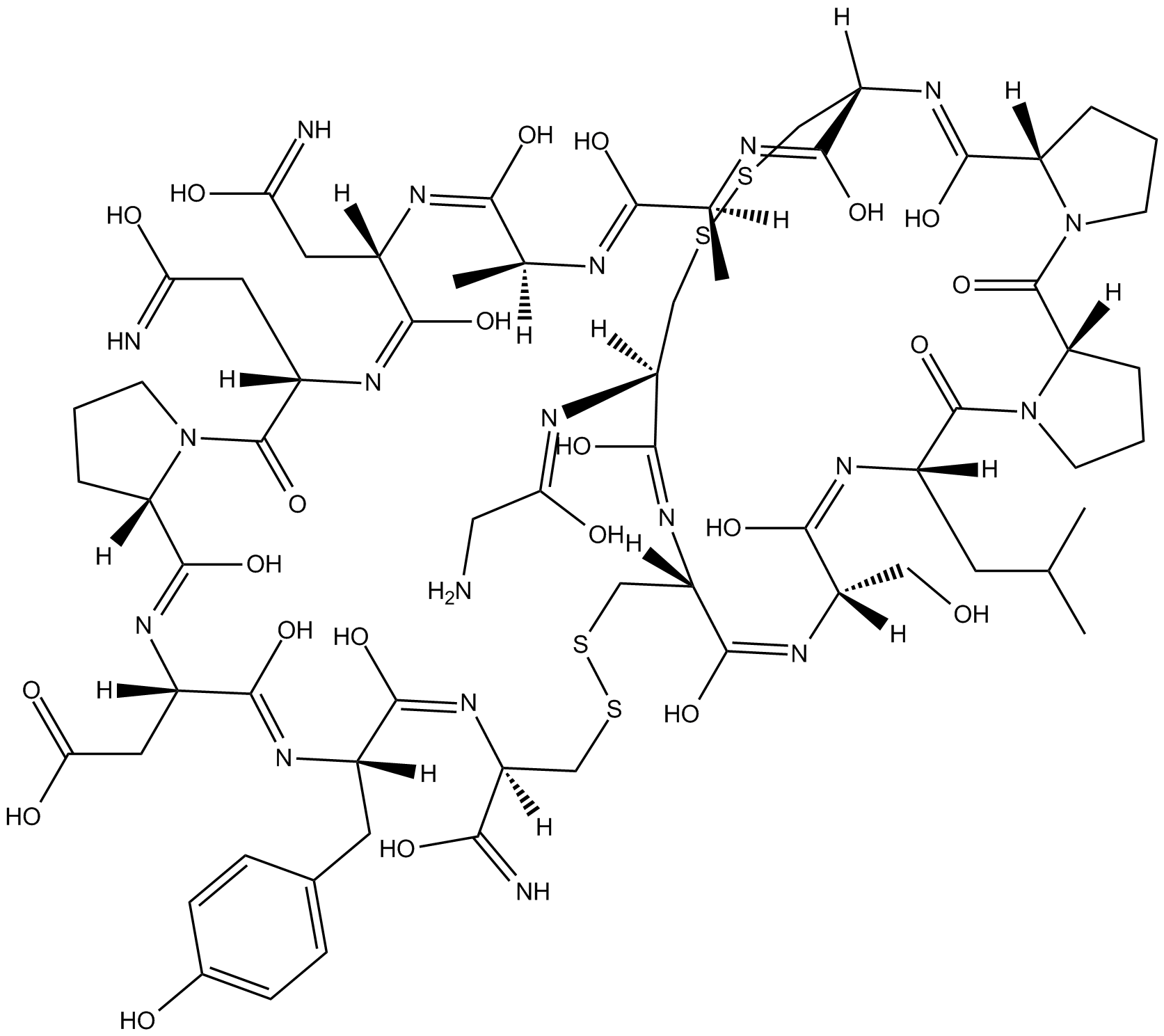
-
GC11577
α-Methyl-5-hydroxytryptamine maleate
α-Me-5-HT, α-Methyl-5-HT, α-Methyl-5-hydroxytryptamine, α-Methylserotonin
5-HT2B receptor agonist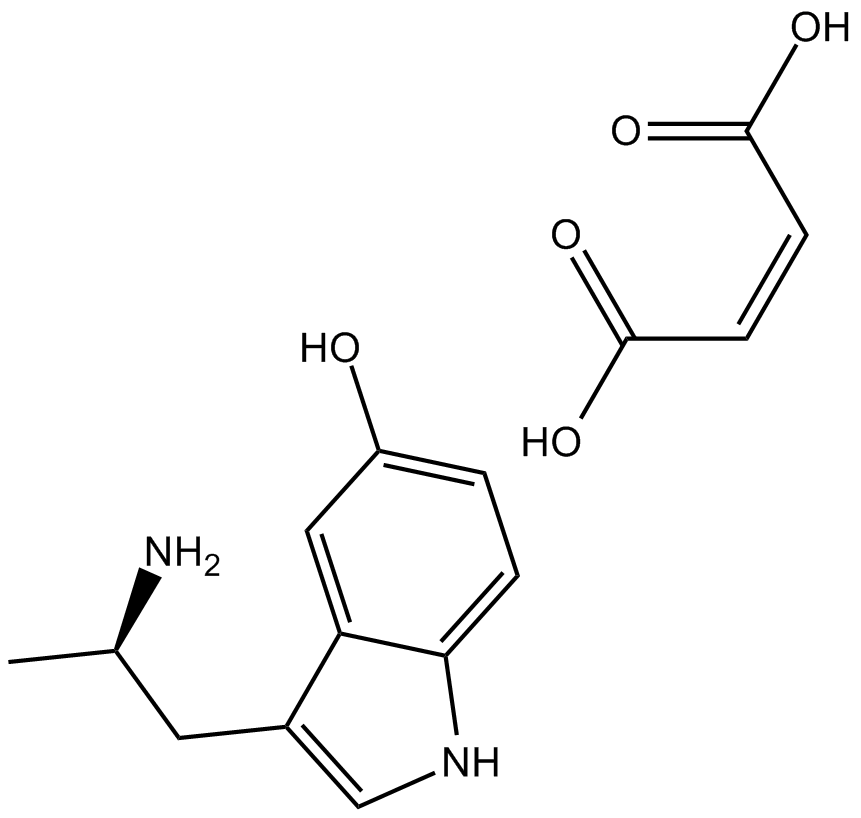
-
GC34242
β-Amyloid (1-42), rat TFA
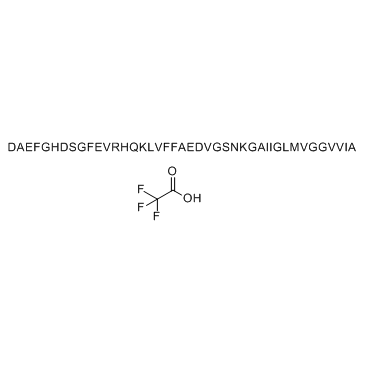
-
GC31146
β-Amyloid (10-35), amide
β-Amyloid (10-35), Amid besteht aus 26 Aminosäuren (10-35 Reste des Aβ-Peptids) und ist der Hauptbestandteil der Amyloid-Plaques der Alzheimer-Krankheit.
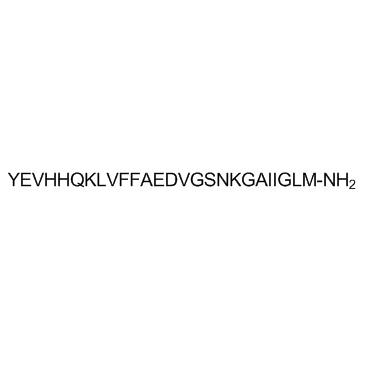
-
GC31129
β-Amyloid 1-16 (Amyloid β-Protein (1-16))
Amyloid β-Protein (1-16)
β-Amyloid 1-16 (Amyloid β-Protein (1-16)) ist ein &7#946;-Amyloid-Proteinfragment, das an der Metallbindung beteiligt ist.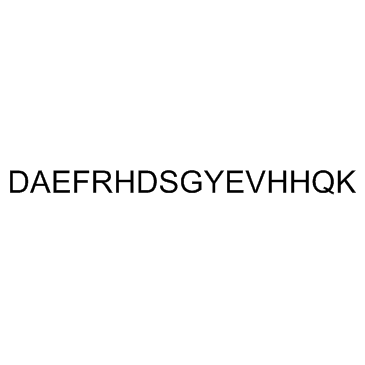
-
GC31171
β-Amyloid 1-28 (Amyloid β-Protein (1-28))
Amyloid β-Protein (1-28)
β-Amyloid 1-28 (Amyloid β-Protein (1-28)) ist ein &7#946;-Amyloid-Proteinfragment, das an der Metallbindung beteiligt ist.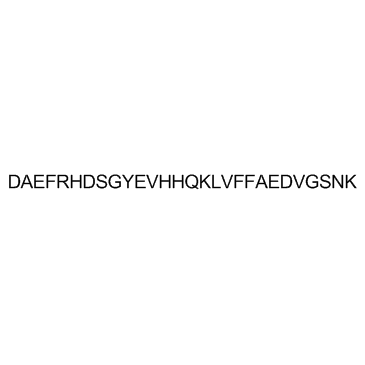
-
GC30325
β-Amyloid 22-35 (Amyloid β-Protein (22-35))
β-Amyloid 22-35 (Amyloid β-Protein 22-35), das Fragment der Reste 22-35 von β-Amyloid-Protein, hat eine zytotoxische Wirkung auf kultivierte Neuronen aus dem Hippocampus der Ratte in serumfreiem Medium.
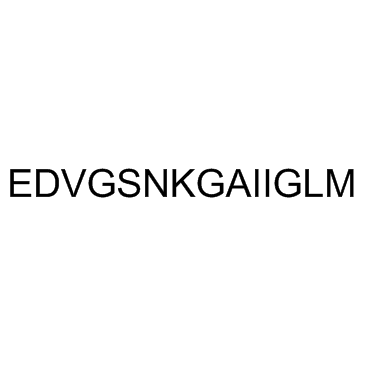
-
GC31137
β-Amyloid 29-40 (Amyloid beta-protein(29-40))
β-Amyloid 29-40 (Amyloid beta-protein(29-40)) ist ein Fragment von Amyloid-β Peptid.

-
GC31179
β-Amyloid 31-35
β-Amyloid 31-35 ist die kürzeste Sequenz des nativen Amyloid-β-Peptids, das seine neurotoxische Aktivität behält.
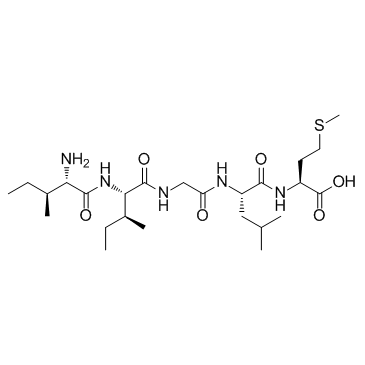
-
GC11449
β-CCB
benzodiazepine receptor ligand
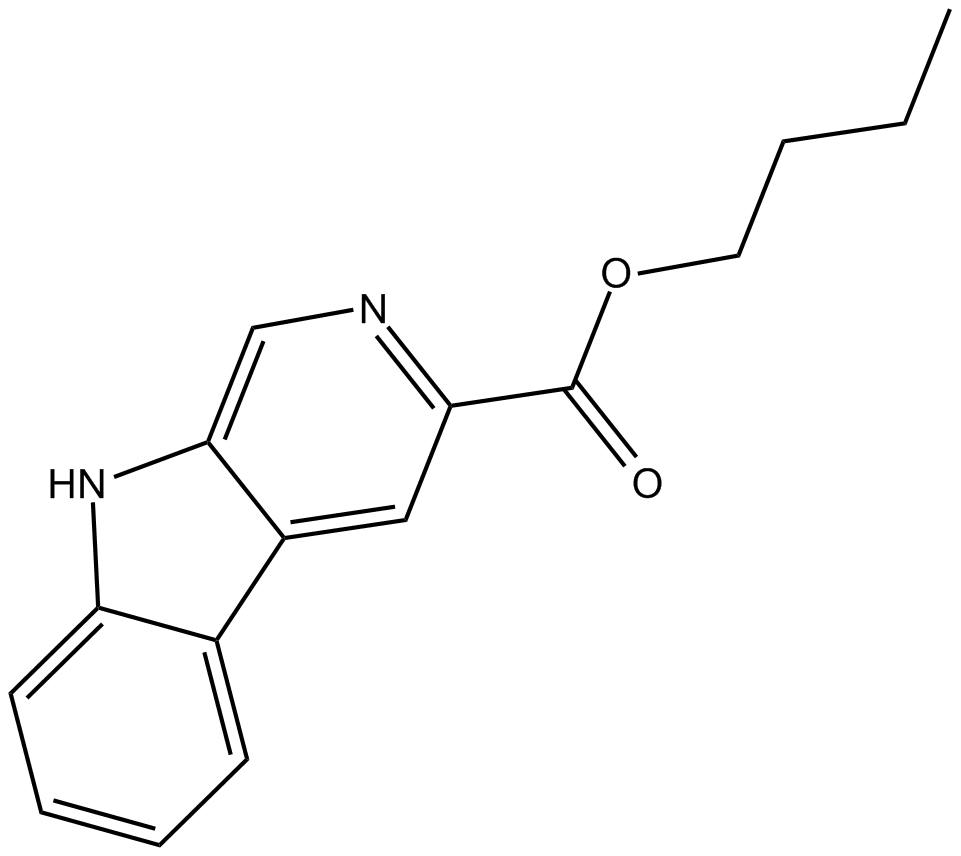
-
GC33595
β-CGRP, human (Human β-CGRP)
β-CGRP, menschlich (Human β-CGRP) ist eines der Calcitonin-Peptide und wirkt über den Komplex aus dem calcitonin-receptor-like receptor (CRLR) und dem receptor-activity-modifying protein (RAMP), mit IC50-Werten von 1 nM und 300 nM für CRLR/RAMP1 bzw. CRLR/RAMP2 in Zellen.

-
GC18033
γDGG
γDGG ist ein kompetitiver AMPA-Rezeptorblocker.
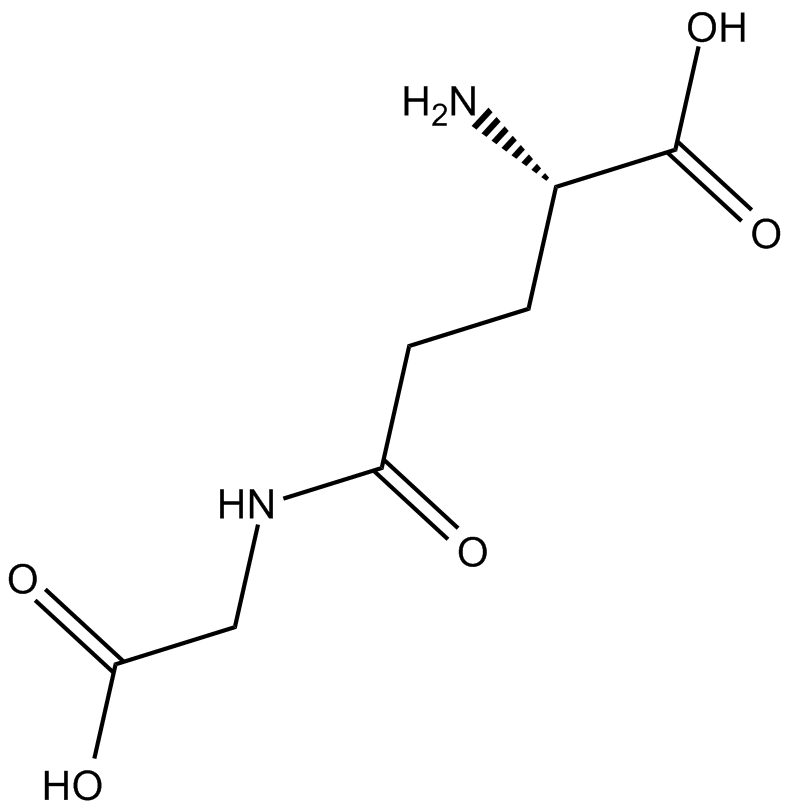
-
GC52013
(±)-10-hydroxy-12(Z)-Octadecenoic Acid
10-hydroxy-cis-12-Octadecenoic Acid
An oxylipin and metabolite of linoleic acid
-
GC52421
(±)-10-hydroxy-12(Z)-Octadecenoic Acid-d5
10-hydroxy-cis-12-Octadecenoic Acid-d5
An internal standard for the quantification of (±)-10-hydroxy-12(Z)-octadecenoic acid
-
GC41657
(±)-2-Amino-6,7-dihydroxy-1,2,3,4-tetrahydronaphthalene (hydrobromide)
(±)-ADTN, 6,7-ADTN, 6,7-diOHATN, NSC 287353
(±)-2-Amino-6,7-dihydroxy-1,2,3,4-tetrahydronaphthalene (6,7-ADTN) is a dopamine receptor agonist (EC50s = 3.5 and 0.65 μM in rat striatal and nucleus accumbens homogenates, respectively).
-
GC41658
(±)-2-hydroxy Ibuprofen
(±)-2-Hydroxy-Ibuprofen ist ein Metabolit von Ibuprofen.

-
GC62726
(±)-Amiflamine
(±)-Amiflamin (FLA 336) ist ein potenter Monoaminoxidase-A (MAO-A)-Hemmer mit einem pIC50 von 5,57.
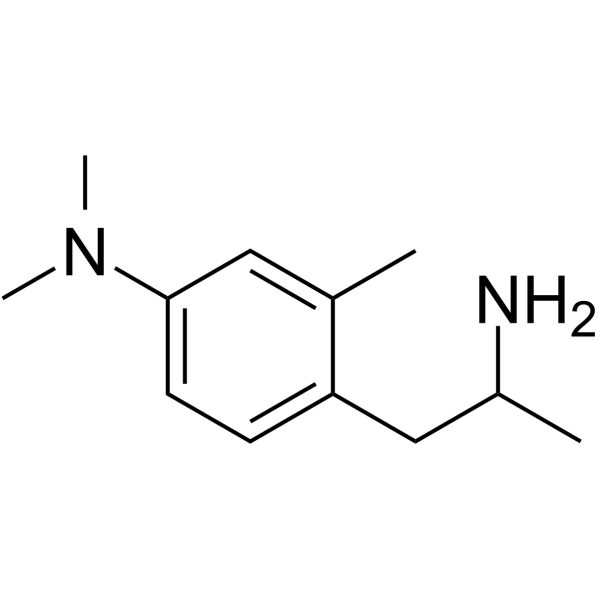
-
GC46272
(±)-Asenapine-13C-d3 (hydrochloride)
An internal standard for the quantification of (±)-asenapine

-
GC46274
(±)-Baclofen-d4
(±)-Baclofen-d4 ist das mit Deuterium bezeichnete Baclofen.

-
GC60394
(±)-Duloxetine hydrochloride
(Rac)-Duloxetine hydrochloride
(±)-Duloxetin ((Rac)-Duloxetin)-Hydrochlorid ist das Racemat von Duloxetin-Hydrochlorid.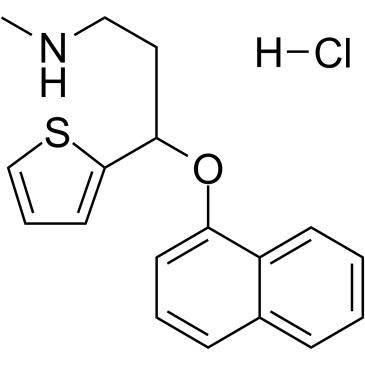
-
GC14410
(±)-Epibatidine
CMI 545
nicotinic agonist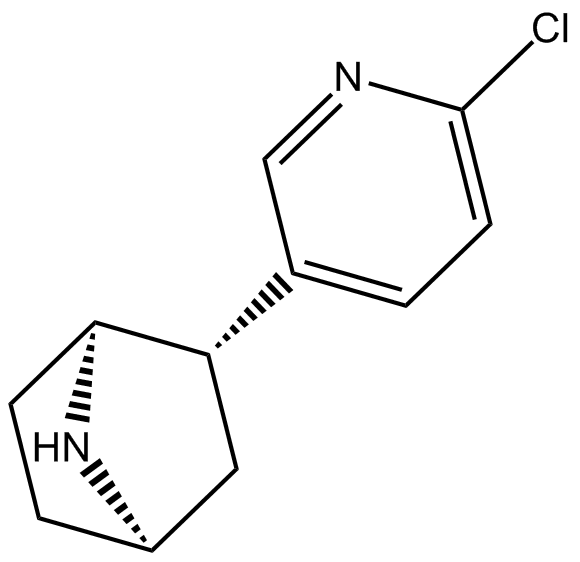
-
GC46288
(±)-Epibatidine (hydrochloride)
CMI 545 dihydrochloride
An agonist of α4β2 subunit-containing nAChRs
-
GC46290
(±)-Ibuprofen-d3
DL-Ibuprofen-d3
Ibuprofen D3 ist ein Deuterium mit der Bezeichnung Ibuprofen.
-
GC49515
(±)-Ibuprofen-d3 (sodium salt)
DL-Ibuprofen-d3
An internal standard for the quantification of (±)-ibuprofen
-
GC45278
(±)-Ketoprofen-d3
(R,S)-Ketoprofen-d3, 2-(3-benzoylphenyl)Propionic Acid-d3

-
GC12699
(±)-LY 395756
ligand for mGlu2 and mGlu3 receptor
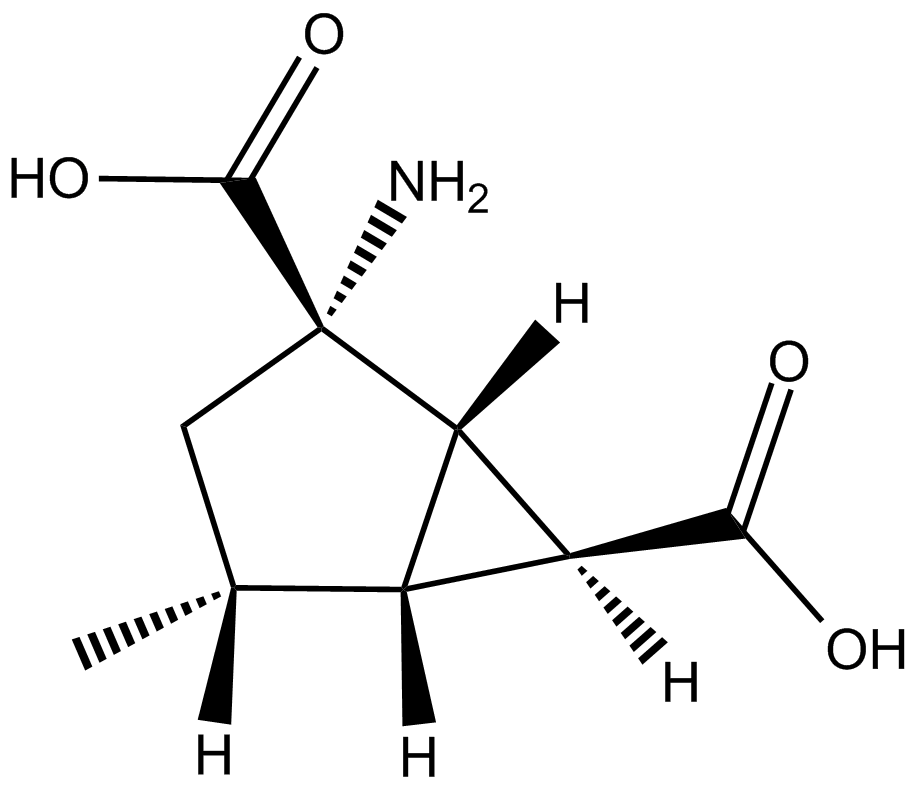
-
GC16735
(±)-McN 5652
5-HT uptake inhibitor
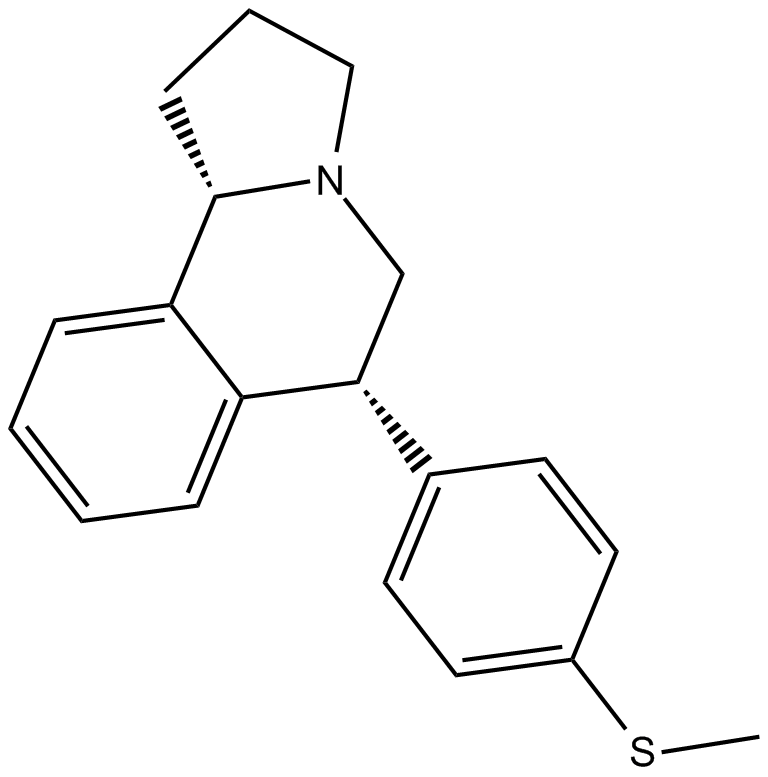
-
GC49875
(±)-N-desmethyl Venlafaxine (hydrochloride)
Wy 45494
A minor active metabolite of venlafaxine
-
GC46305
(±)-Nicotine-d3
DL-Nicotine-d3, (±)-Nicotine-methyl-d3
An internal standard for the quantification of (±)-nicotine
-
GC14834
(±)-Nipecotic acid
(±)-Nipecotic Acid, (R,S)-Nipecotic Acid, 3-Piperidine Carboxylic Acid, DL-Piperidine 3-Carboxylic Acid
GABA uptake inhibitor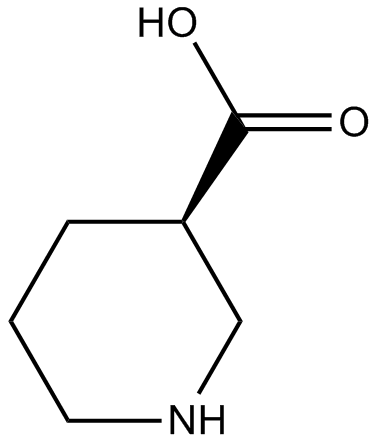
-
GC41676
(±)-Nornicotine
DL-Nornicotine, (R,S)-Nornicotine
(±)-Nornicotine is a metabolite of nicotine that acts as a neuronal nicotinic acetylcholine receptor (nAChR) agonist.
-
GC49482
(±)-Nornicotine-d4
DL-Nornicotine-d4, (R,S)-Nornicotine-d4
An internal standard for the quantification of (±)-nornicotine
-
GC12394
(±)-trans-ACPD
Trans-(±)-ACP
(±)-trans-ACPD, ein metabotroper Rezeptoragonist, erzeugt eine Kalziummobilisierung und einen Einwärtsstrom in kultivierten Purkinje-Neuronen des Kleinhirns.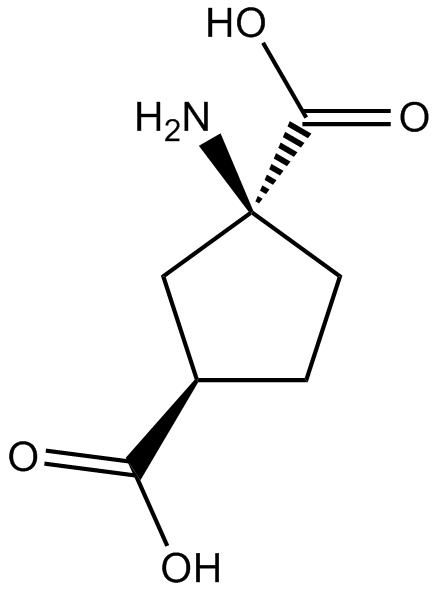
-
GC11128
(±)-Vesamicol hydrochloride
(±)-AH5183 hydrochloride
(±)-Vesamicol-Hydrochlorid ((±)-AH5183-Hydrochlorid) ist ein potenter vesikulärer Acetylcholin-Transport-Inhibitor mit einem Ki von 2 nM.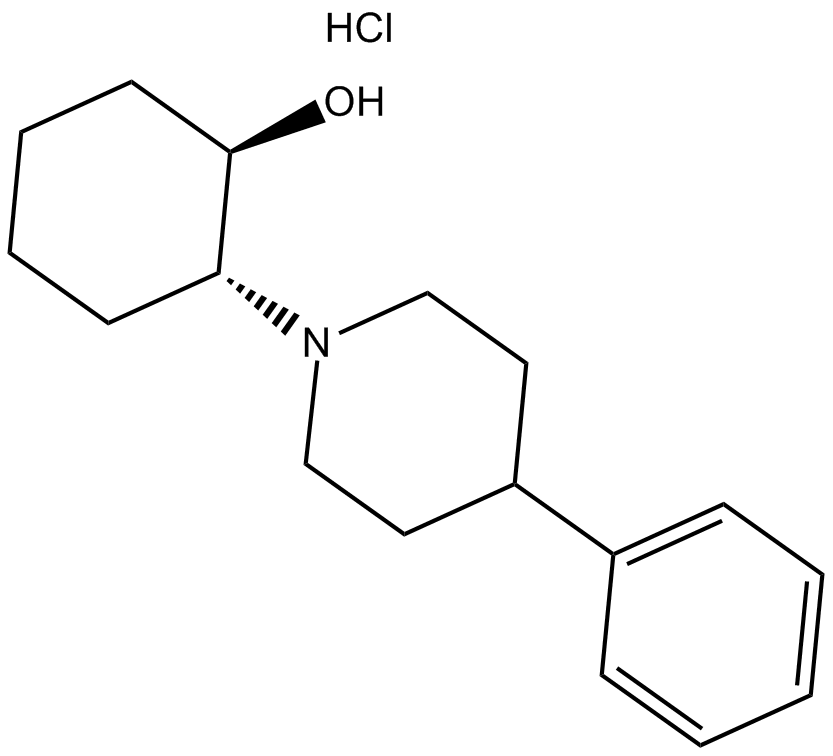
-
GC41685
(±)-WIN 55,212 (mesylate)
(±)-WIN 55,212-2 is a potent aminoalkylindole cannabinoid (CB) receptor agonist with a Ki value of 62.3 and 3.3 nM for human recombinant central cannabinoid (CB1) and peripheral cannabinoid (CB2) receptors, respectively.

-
GC41213
(±)10-HDHA
10hydroxy Docosahexaenoic Acid, (±)10HDoHE
(±)10-HDHA is an autoxidation product of docosahexaenoic acid (DHA) in vitro.

-
GC41214
(±)11-HDHA
11hydroxy Docosahexaenoic Acid, (±)11-HDoHE
(±)11-HDHA is an autoxidation product of docosahexaenoic acid (DHA) in vitro.
-
GC40467
(±)11-HETE
(±)11-Hydroxyeicosatetraenoic Acid
(±)11-HETE is one of the six monohydroxy fatty acids produced by the non-enzymatic oxidation of arachidonic acid.
-
GC40802
(±)12(13)-DiHOME
Isoleukotoxin diol
(±)12(13)-DiHOME is the diol form of (±)12(13)-EpOME, a cytochrome P450-derived epoxide of linoleic acid also known as isoleukotoxin.

-
GC41191
(±)13(14)-EpDPA
(±)13,14-EDP, (±)13,14-EpDPE, (±)13,14-epoxy DPA, (±)13,14-epoxy Docosapentaenoic Acid
(±)13(14)-EpDPA (13,14-EpDPE) ist das Produkt der Reaktion von Cytochrom-P-450-Epoxygenase mit Docosahexaensäure (DHA).
-
GC41192
(±)13-HDHA
13hydroxy Docosahexaenoic Acid, (±)13-HDoHE
(±)13-HDHA is an autoxidation product of docosahexaenoic acid (DHA) in vitro.
-
GC41193
(±)14-HDHA
14hydroxy Docosahexaenoic Acid, (±)14-HDoHE
(±)14-HDHA is an autoxidation product of docosahexaenoic acid (DHA) in vitro.
-
GC41194
(±)16(17)-EpDPA
(±)16,17 EDP, (±)16,17-epoxy Docosapentaenoic Acid, (±)16,17-epoxy DPA, (±)16,17-EpDPE
EDHF (endothelium-derived hyperpolarizing factor) is an unidentified mediator released from vascular endothelial cells in response to acetylcholine and bradykinin which is distinct from the NOS- (nitric oxide) and COX-derived (prostacyclin) vasodilators.

-
GC41196
(±)16-HDHA
16hydroxy Docosahexaenoic Acid, (±)16-HDoHE
(±)16-HDHA is an autoxidation product of docosahexaenoic acid (DHA) in vitro.
-
GC41197
(±)17-HDHA
17-hydroxy Docosahexaenoic Acid, 17-hydroxy DHA, (±)17-HDoHE
(±)17-HDHA is an autoxidation product of docosahexaenoic acid in vitro.
-
GC41199
(±)19(20)-EpDPA
(±)19,20 EDP, (±)19,20-epoxy Docosapentaenoic Acid, (±)19,20-epoxy DPA, (±)19,20-EpDPE
EDHF (endothelium-derived hyperpolarizing factor) is an unidentified mediator released from vascular endothelial cells in response to acetylcholine and bradykinin which is distinct from the NOS- (nitric oxide) and COX-derived (prostacyclin) vasodilators.
-
GC41202
(±)4-HDHA
4hydroxy Docosahexaenoic Acid, (±)4HDoHE
(±)4-HDHA is an autoxidation product of docosahexaenoic acid (DHA) in vitro.
-
GC41203
(±)7(8)-EpDPA
(±)7,8-EDP, (±)7,8-EpDPE, (±)7,8-epoxy DPA, (±)7,8-epoxy Docosapentaenoic Acid
Docosahexaenoic acid is the most abundant ω-3 fatty acid in neural tissues, especially in the brain and retina.
-
GC41204
(±)7-HDHA
7hydroxy Docosahexaenoic Acid, (±)7HDoHE
(±)7-HDHA is an autoxidation product of docosahexaenoic acid (DHA) in vitro.

-
GC41205
(±)8-HDHA
8hydroxy Docosahexaenoic Acid, (±)8HDoHE
(±)8-HDHA is an autoxidation product of docosahexaenoic acid (DHA) in vitro.
-
GC33544
(±)-Methotrimeprazine (D6) (dl-Methotrimeprazine D6)
(±)-Methotrimeprazine-d6; dl-Methotrimeprazine-d6
(±)-Levomepromazin D6 ((±)-Methotrimeprazin D6) ist das deuteriummarkierte Methotrimeprazin, welches ein Antagonist des D3-Dopamin- und Histamin-H1-Rezeptors ist.
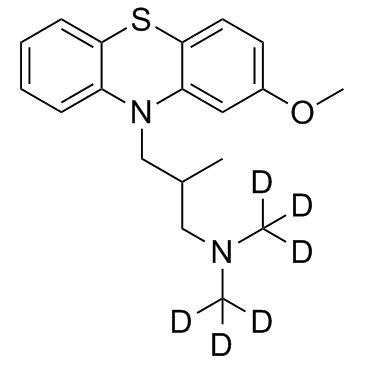
-
GC31026
(±)-Tazifylline
(±)-Tazifyllin ist ein potenter, selektiver und lang wirkender Histamin-H1-Rezeptor-Antagonist.
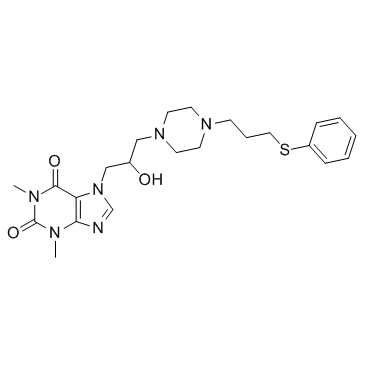
-
GN10155
(+)- Corydaline
(+)-Corydaline, D-Corydaline, NSC 406036
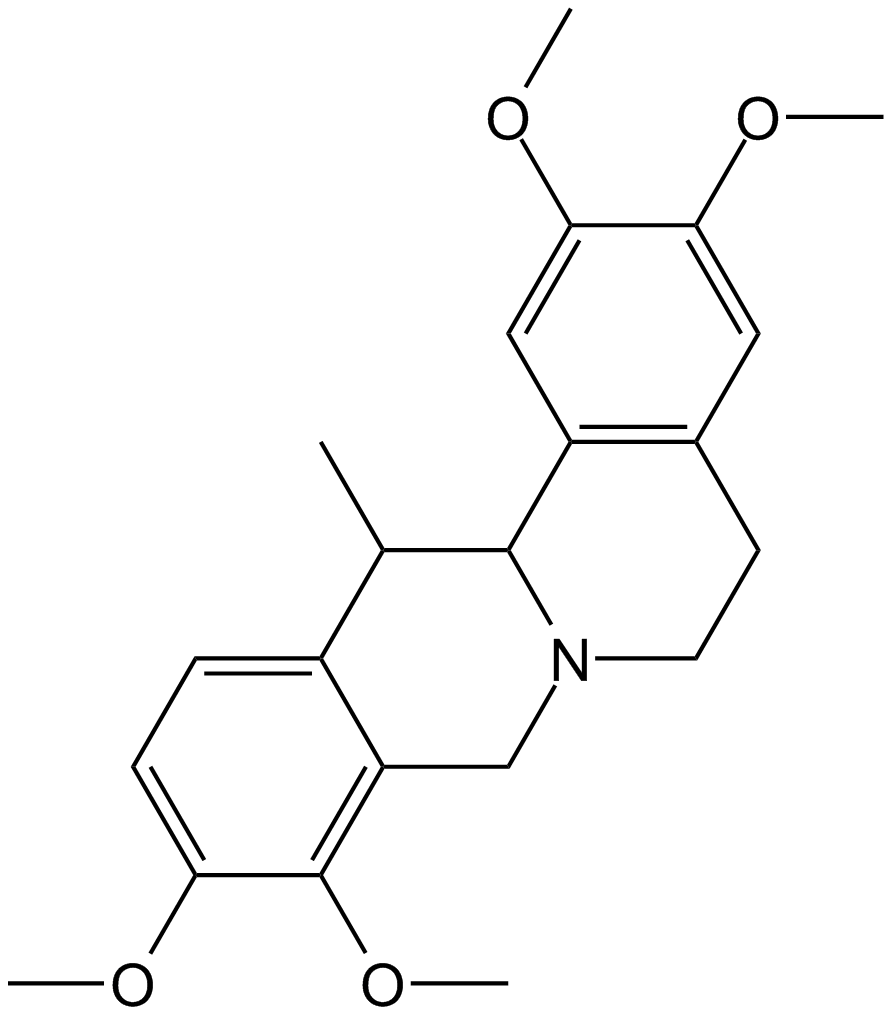
-
GC13156
(+)-AJ 76 hydrochloride
Dopaminrezeptor-Antagonist
